Monday, 29 April 2024
Cambrils
The waves stop me now, coming exactly out of the direction, where I want to go. And up to a metre high, it’s no longer pleasant for me. Les Cases, the first harbour in Catalonia, was deserted, no oficina, no marinero. I couldn’t get ashore, so I set off on the 31 nautical miles around the Ebru delta early in the morning. Once again, calm sea and wind. Good, that’s always good weather for taking photos, but the Ebro delta doesn’t offer much.
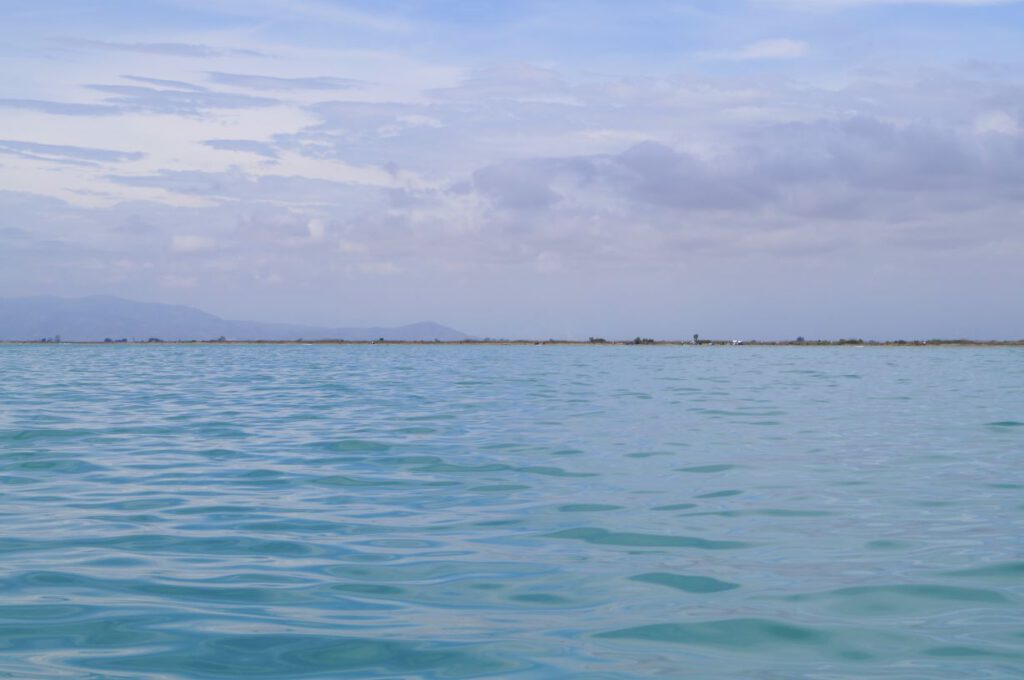
It’s as flat as marshland, only without dykes.
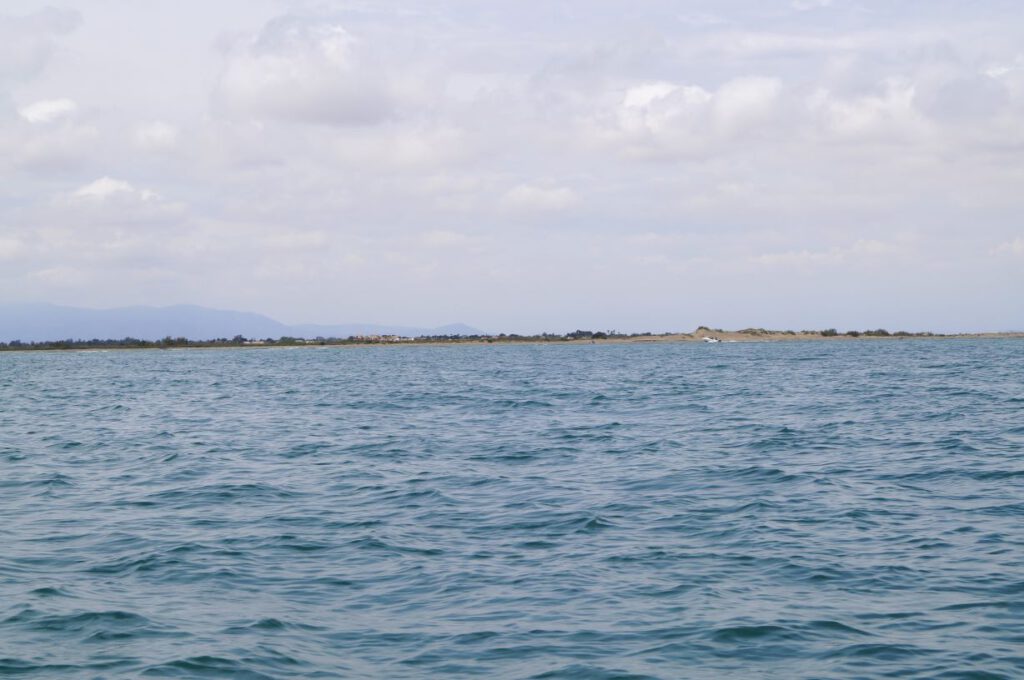
It’s not easy to find the entrance to the Ebro. Somewhere where the motorboat enters.
The next harbour was L’Ametlla de Mar, a beautiful place, the harbour a bit basic. I could stay here, but once again, the weather forced me to take advantage of the favourable conditions. But on the way to Tarragona I realized that I couldn’t cope with the waves, which were almost a metre high. At first, I was still able to do it with half the wind, but shortly before Cab Salou the wind turned more northerly, and I was no longer able to reach it. So, without further ado, I headed for Cambrils. Also, a very nice place with a great harbour. I’m now waiting for better weather here, because I don’t need to go out in extreme continuous rain and the waves are still high, and with zero wind.

You can see that here on the beach.
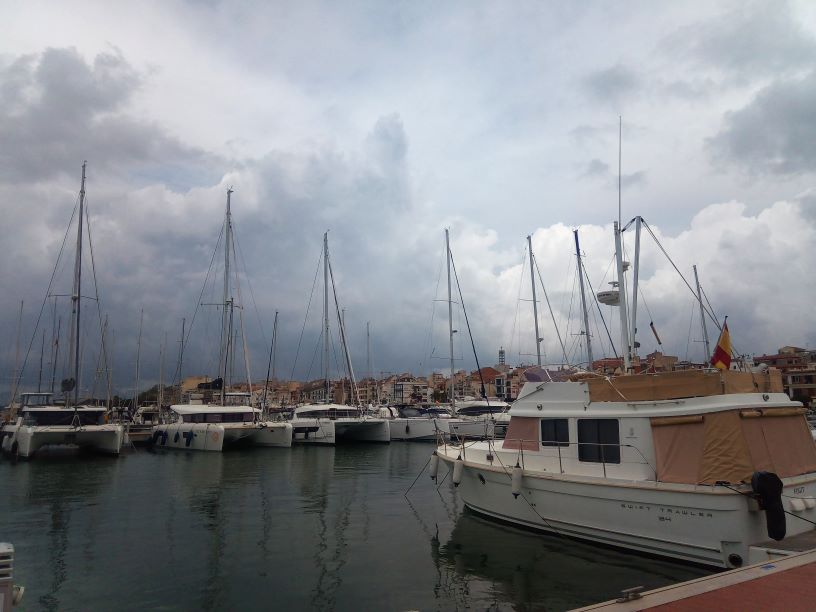
And one day before the bad weather area with continuous rain arrived. That looks not so good.
Tuesday, 14 May 2024
Port de la Selda
Before France, this is probably the last harbour, as it’s only 17 nautical miles to Saint-Cyprien-Plage. I have not been travelling the last ten days alone, Barbara was coming to Barcelona.
It took me two trips from Cambrils to Barcelona, and I discovered the beautiful village of Roda de Bara. They do exist, the tranquil places in Spain.
Before, there was the harbour of Torrodembarra, which is widely advertised.
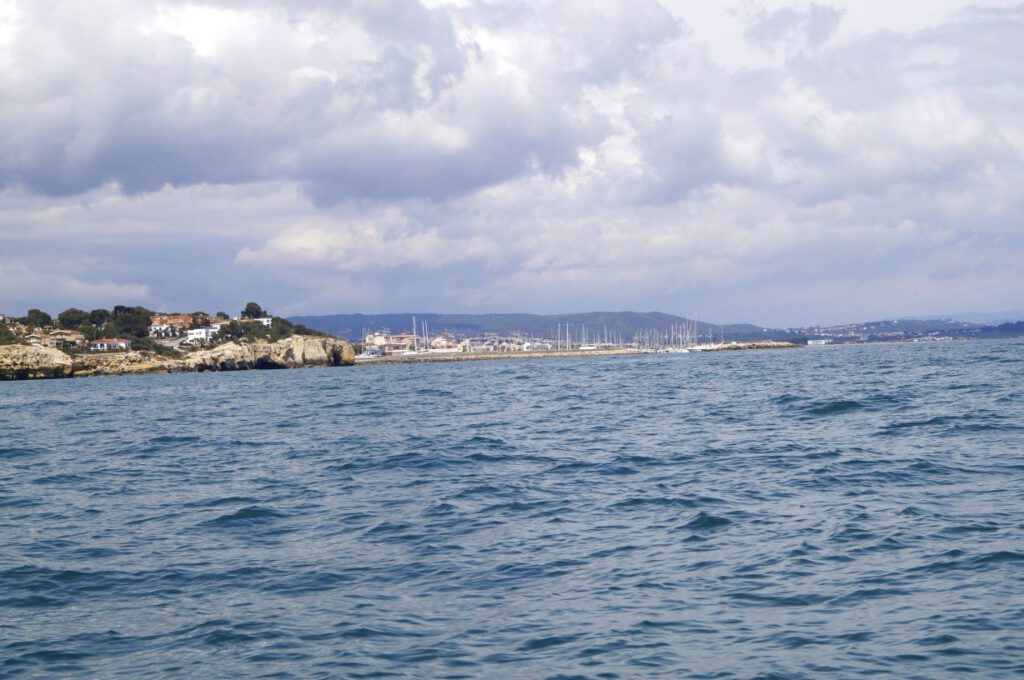
The harbour is beautifully situated on a point,
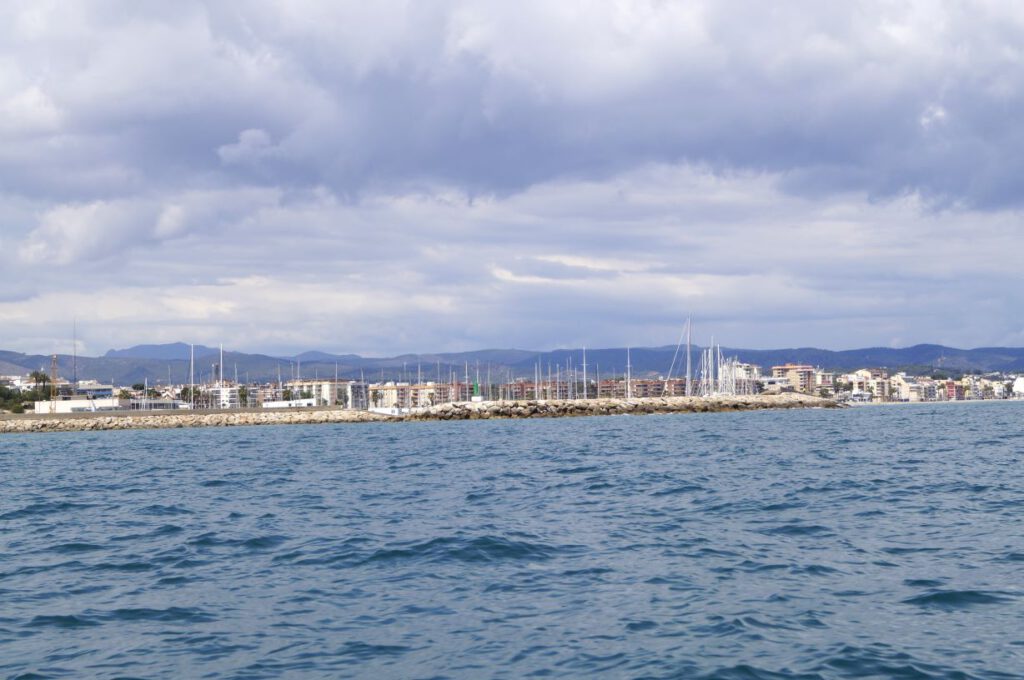
but the view of the town is not great, beach with concrete castles
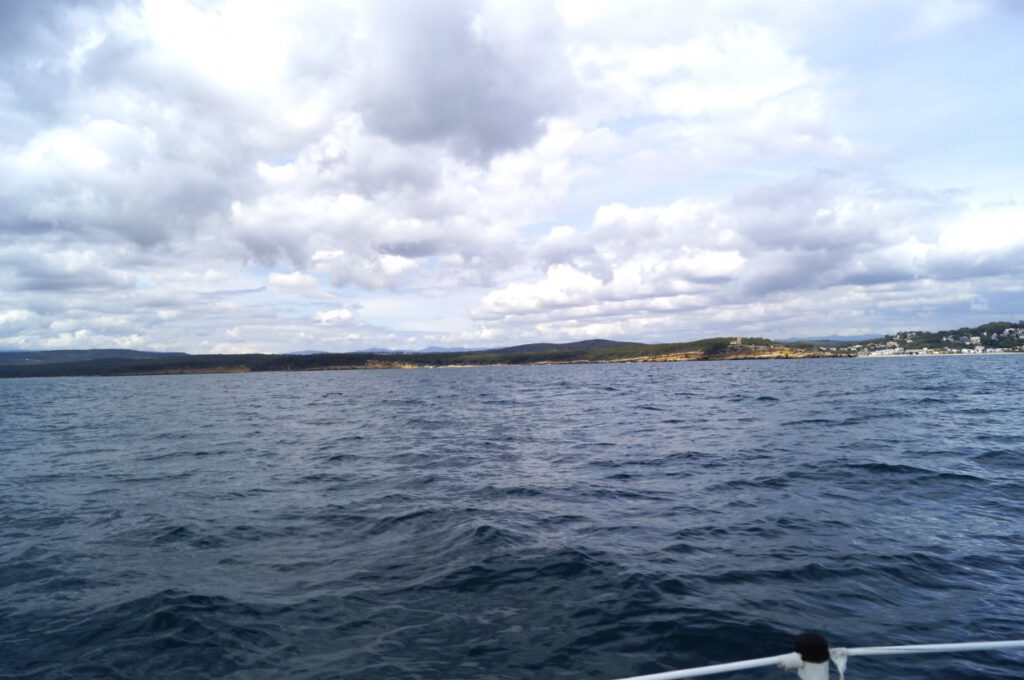
There is a large nature reserve between Torrodembara and Port Bara, all green.
On the way to Port Bara, a strange castle by the sea, integrated into the town.
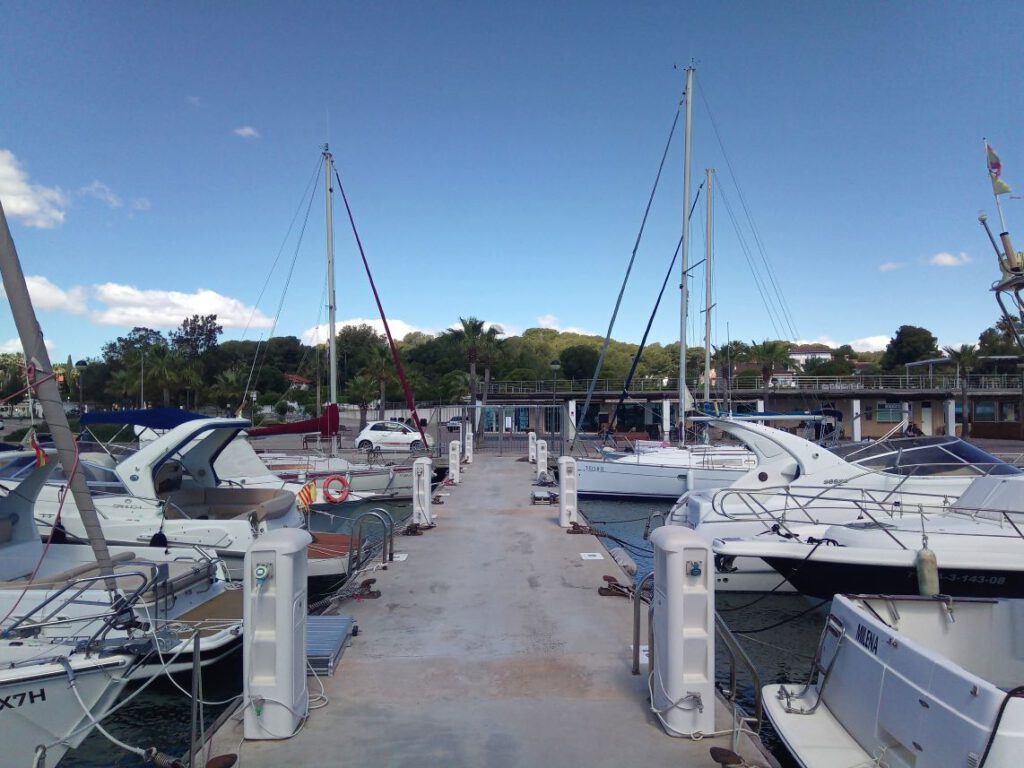
In Port Bara you walk from the jetty directly into the forest.
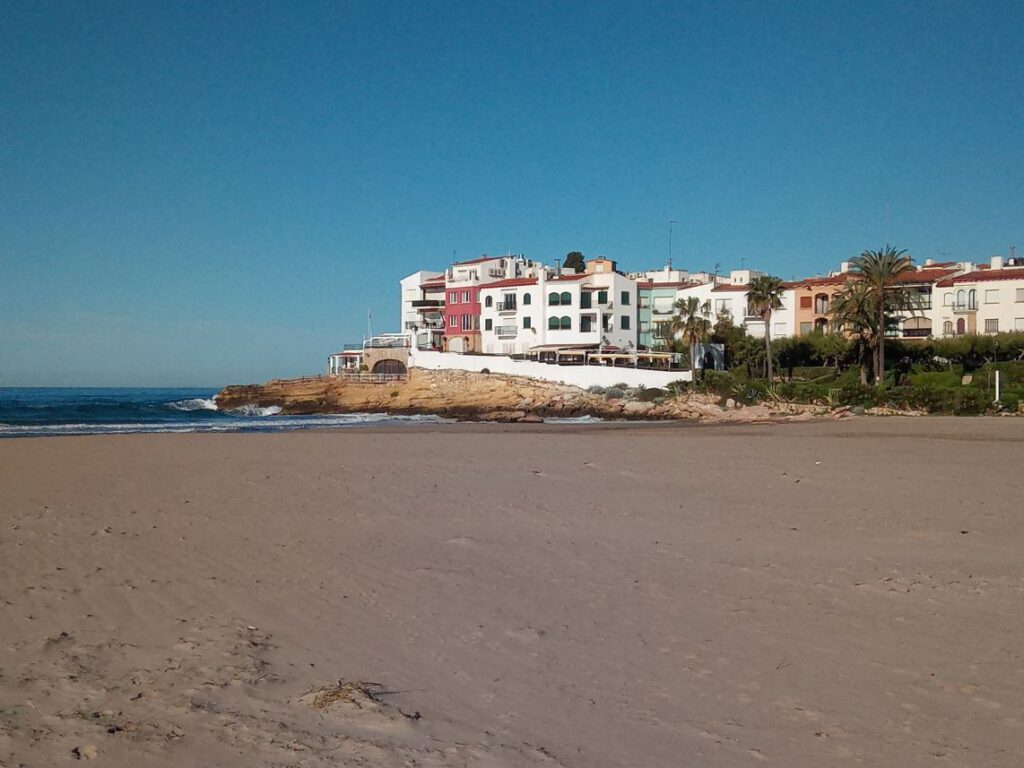
A small cape
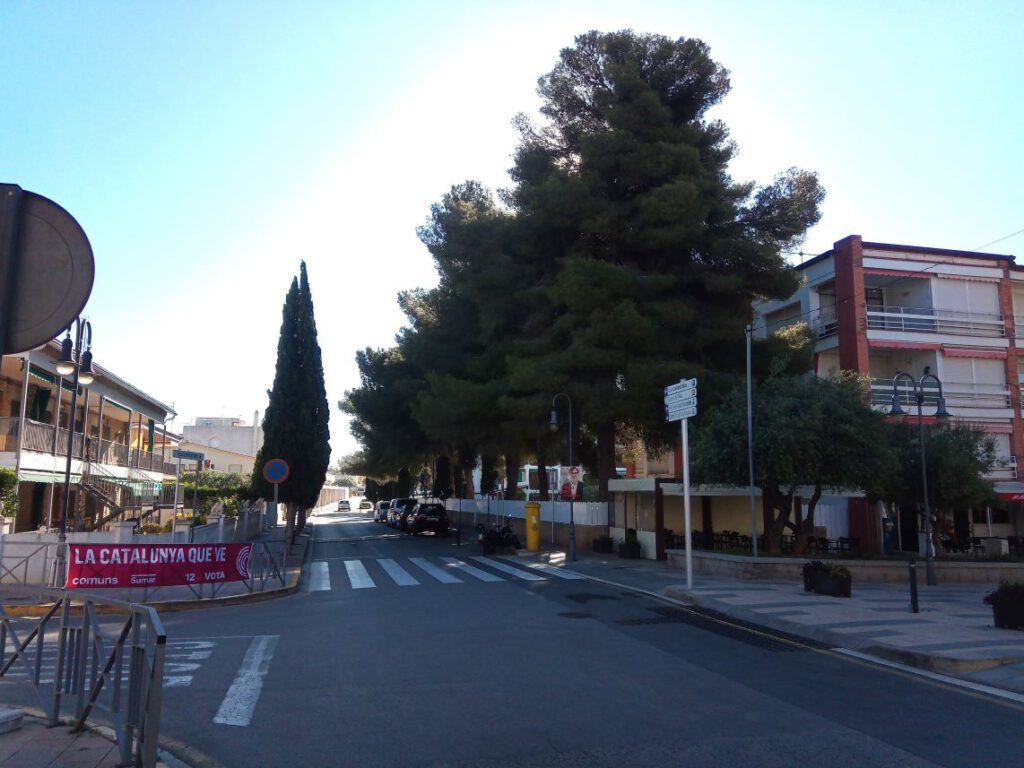
There are also shady trees in the streets here.
The last stretch to Port Ginesta, the harbour before Barcelona, was a little more eventful.
At first the sea was moving softly, but later it became more. In particular, just before Port Ginesta, there was a stretch of a rocky coastline with the well-known wash back effect, the waves crashing back off the rocks. Annoying.

Once again a green coast.
Port Ginesta is close to Barcelona airport. You can hear the planes a little, but only when they are approaching from the south, i.e. from here, and it’s not loud. It only took Barbara about 20 minutes to get here by taxi. We stayed here for a few more days, also to visit Barcelona. Once again, a disappointment, we should avoid big cities. We couldn’t recognize the city because of all the people, which is why there are no pictures.
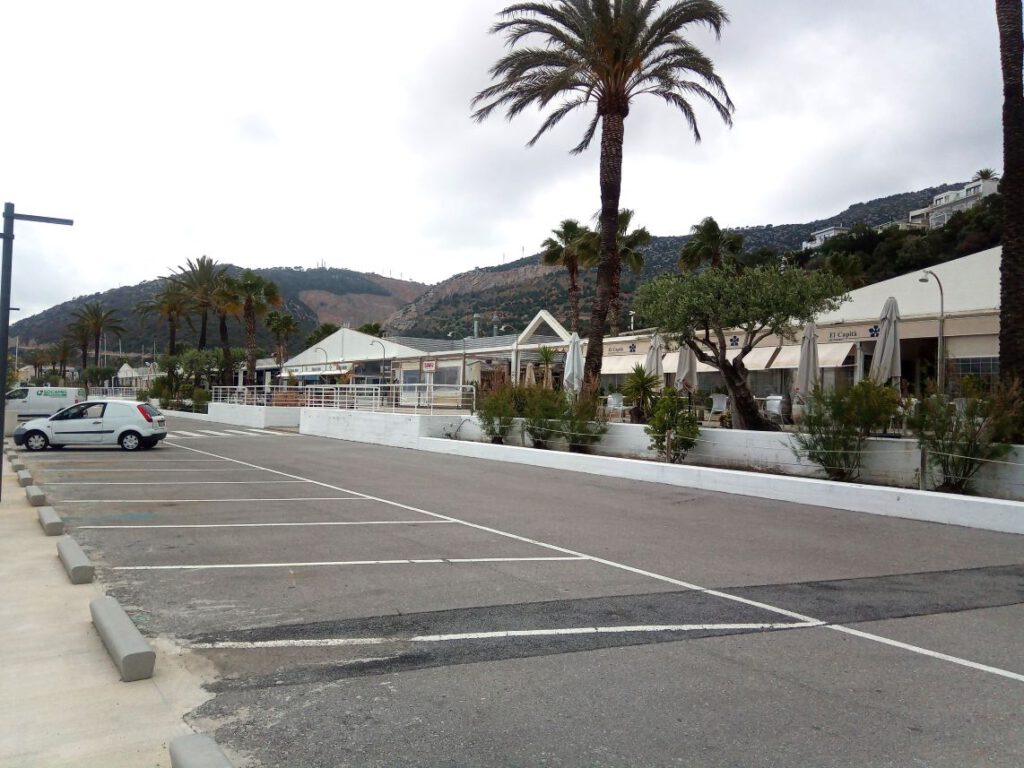
The harbour is a bit dull and there is still nothing going on.
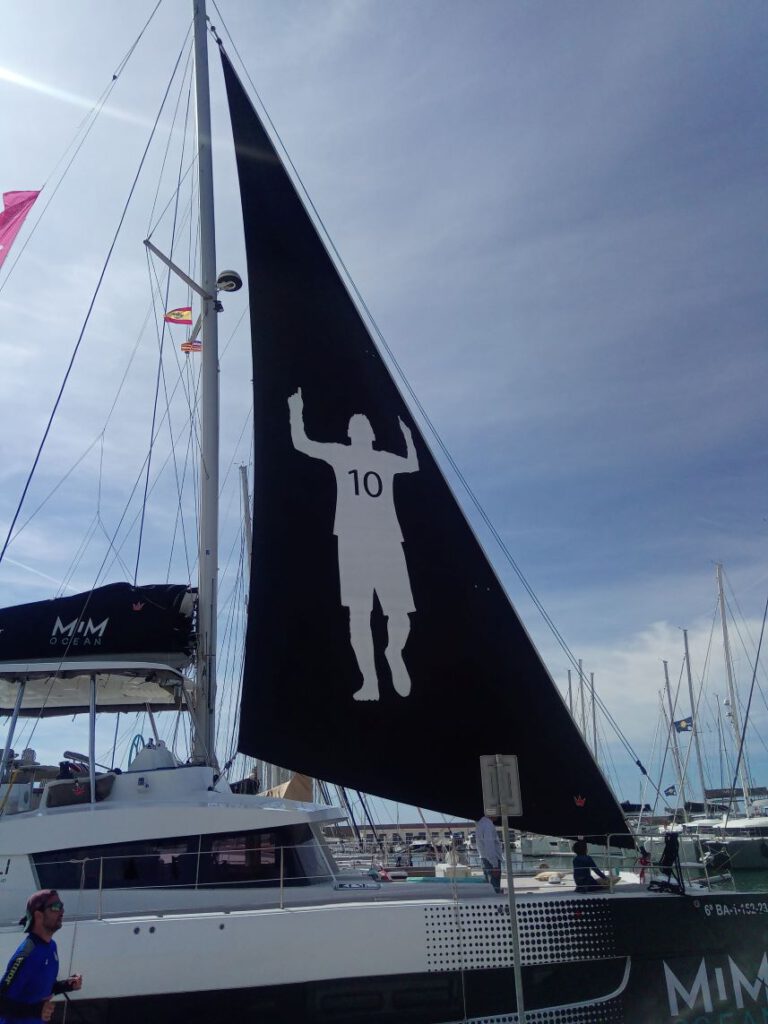
But the fans of Barca and Messi can also be found here.
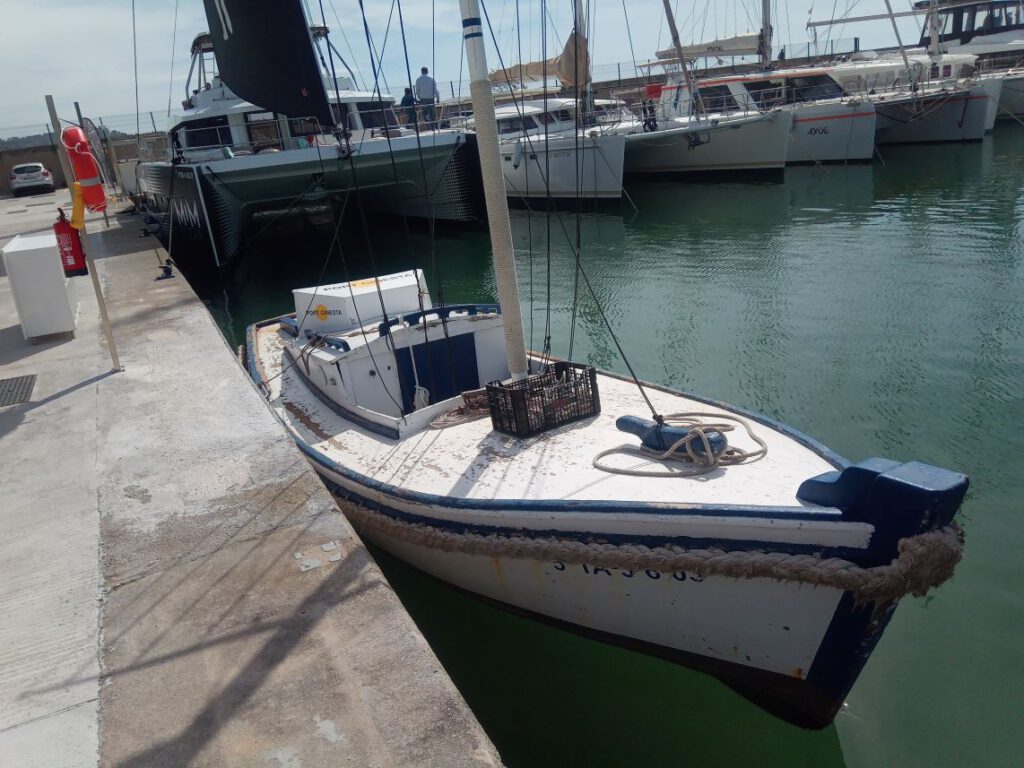
The harbour boat
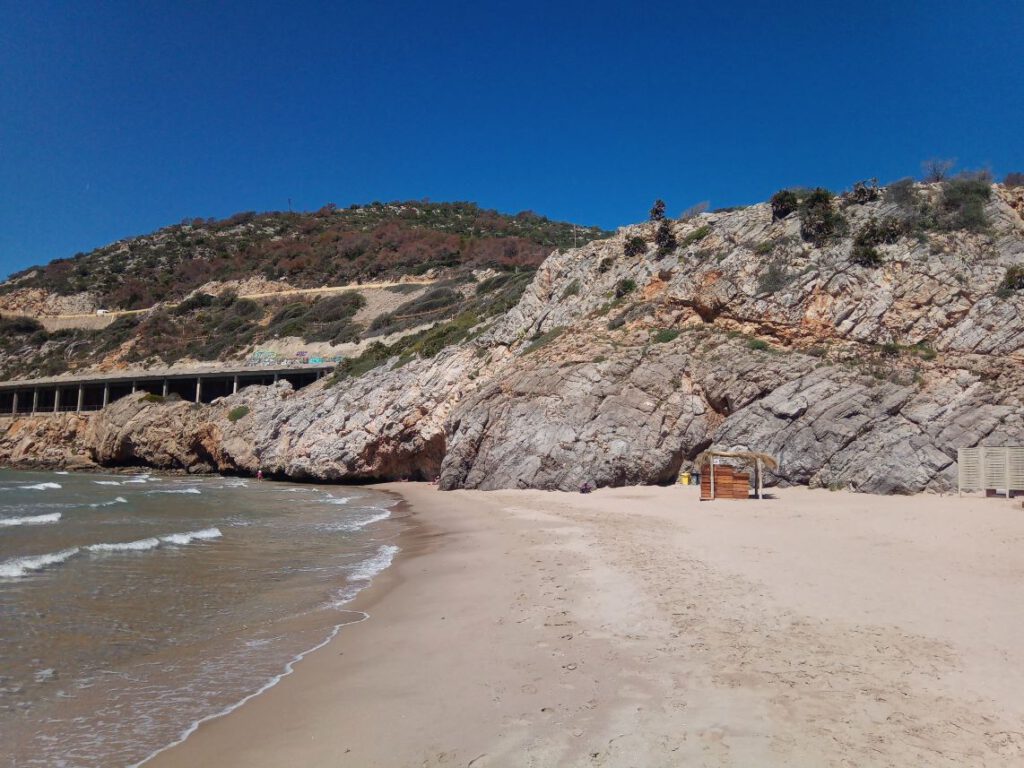
And a nice beach corner right next to the harbour.
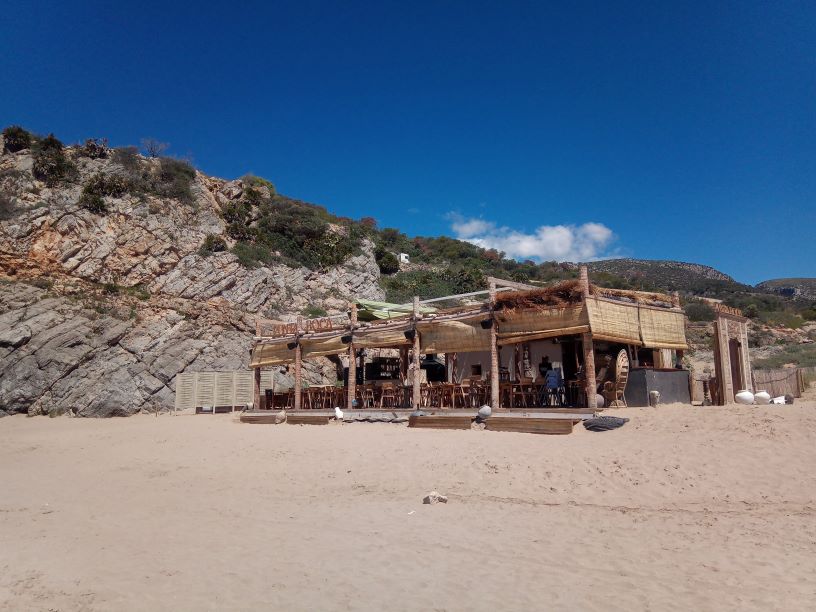
Plus a café
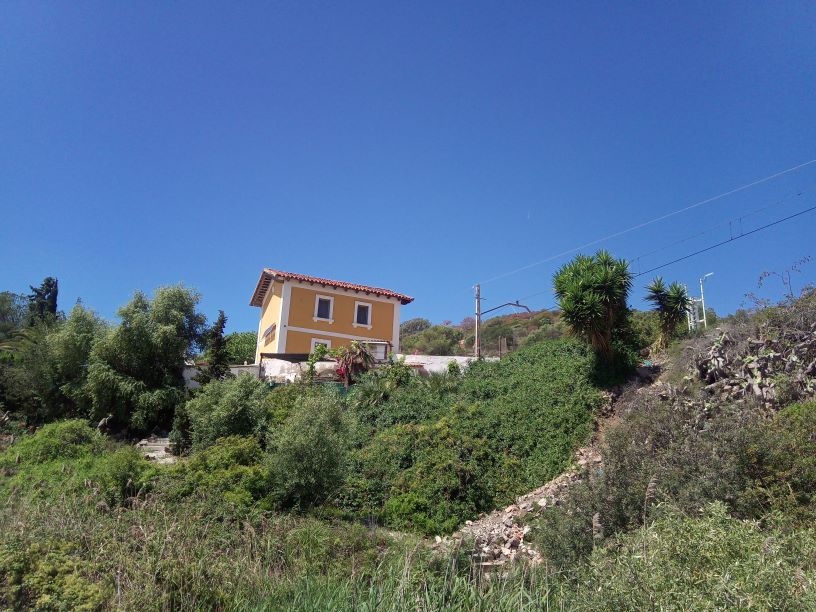
A little house on the railway line.
After Port Ginesta, we sailed past Barcelona to the harbour of El Masnou. A good decision, as there is much less going on here, even though it is still a suburb of Barcelona. The trains here run every 5 minutes, and it’s a long way to get from the harbour to the city. That’s why we didn’t do that and instead travelled on to Blanes early the next morning.
We were able to do some good shopping and replenish our stocks, but we didn’t have time enough to explore the many alleyways.
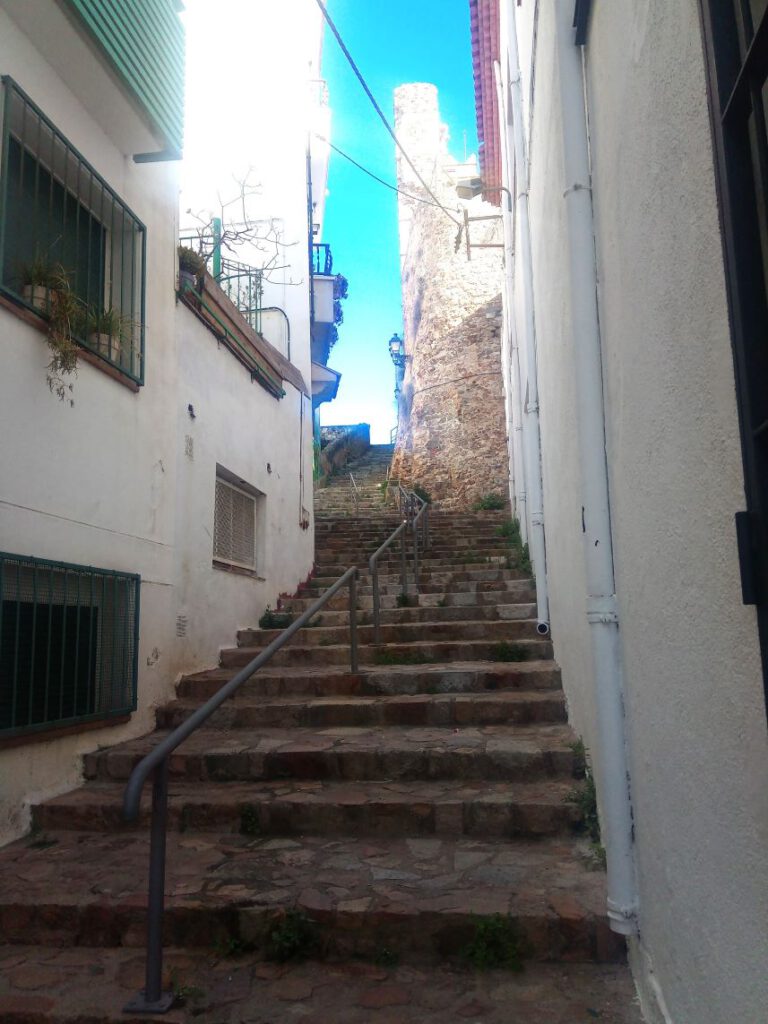
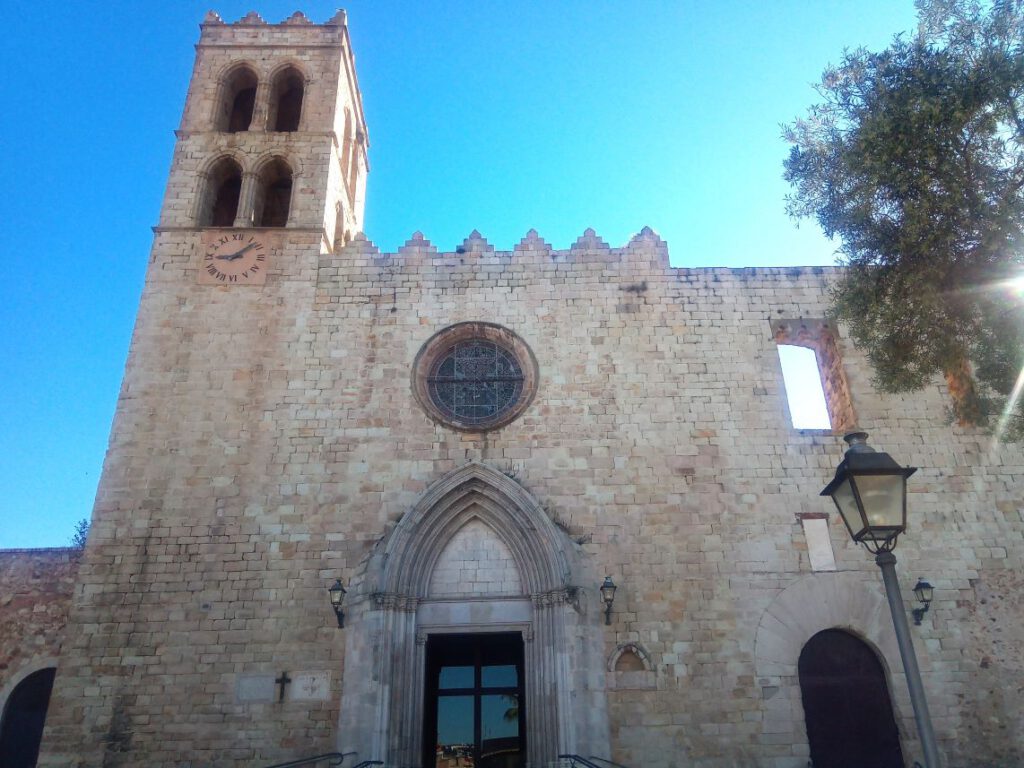
At least we found our way to the old church,
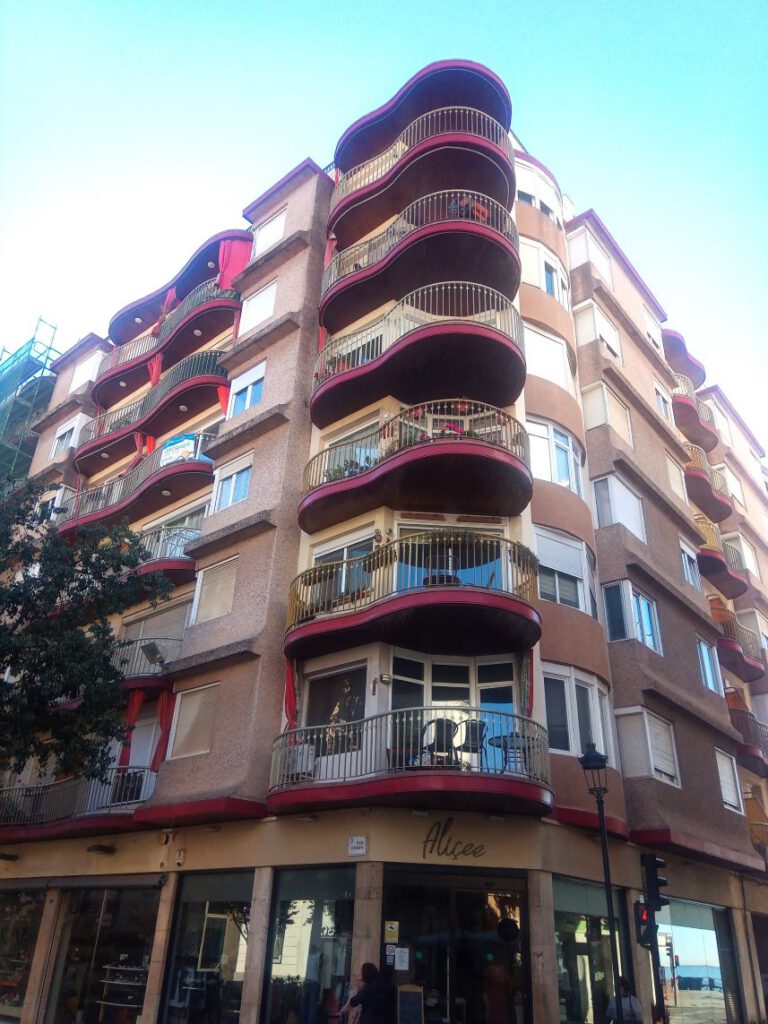
and round balconies.
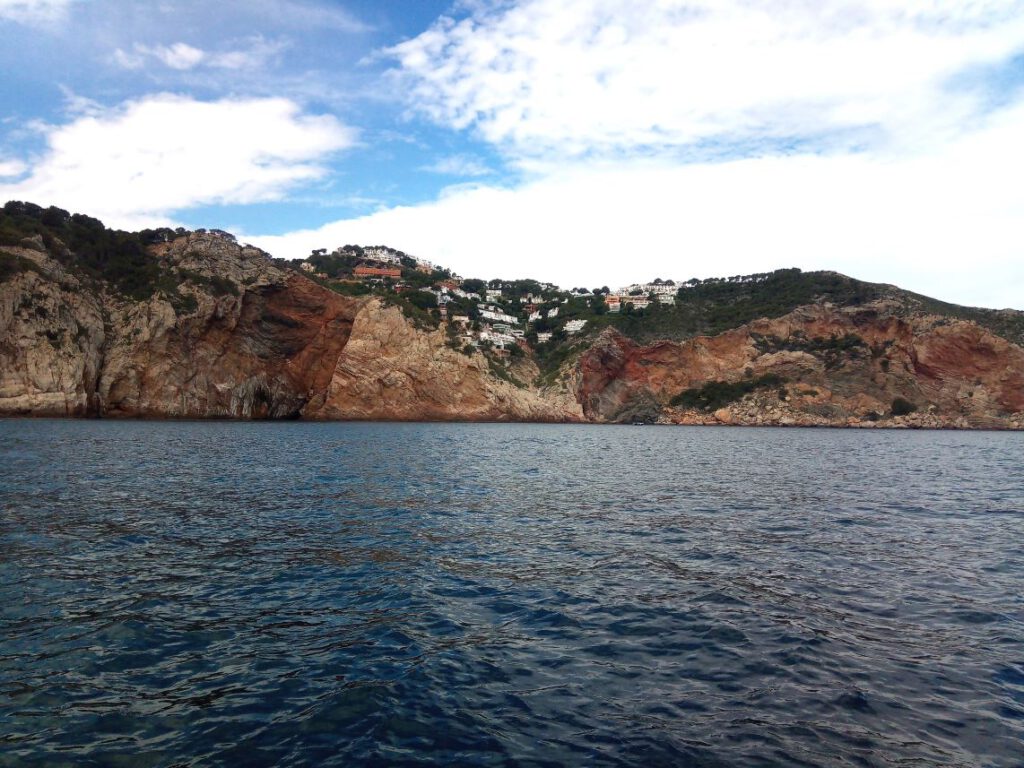
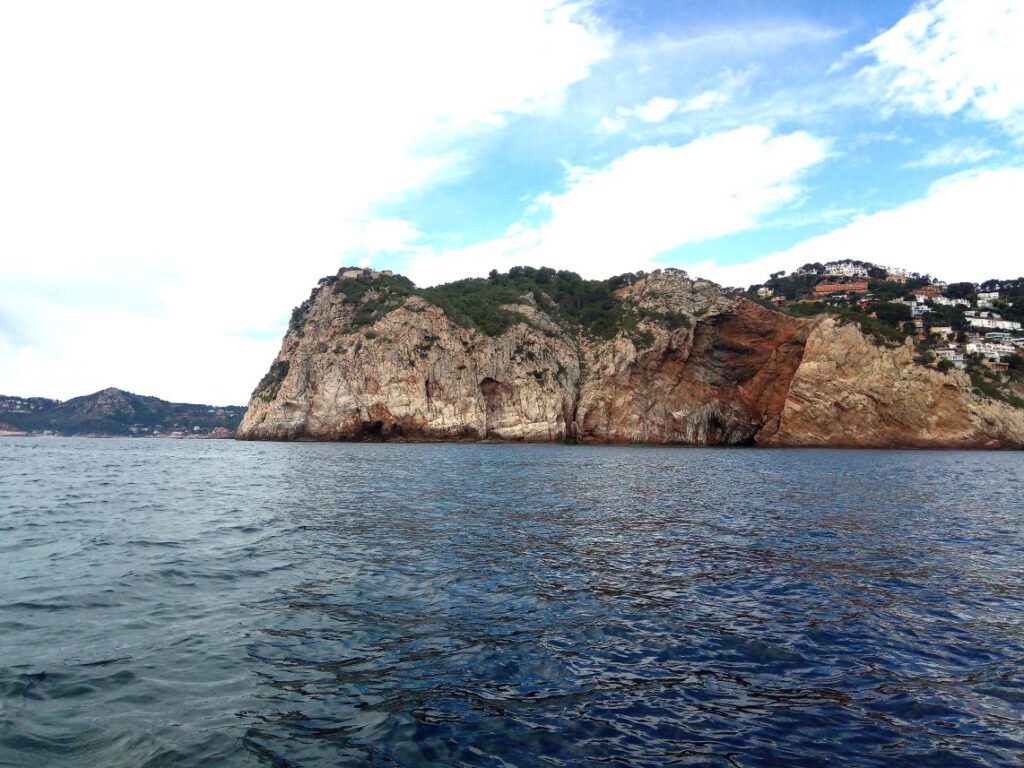
Along the Costa Brava, you can see, that the rocky coast dominates here. We are at the foothills of the Pyrenees. We took a day’s break in Sant Feliu, also really to use our legs again.
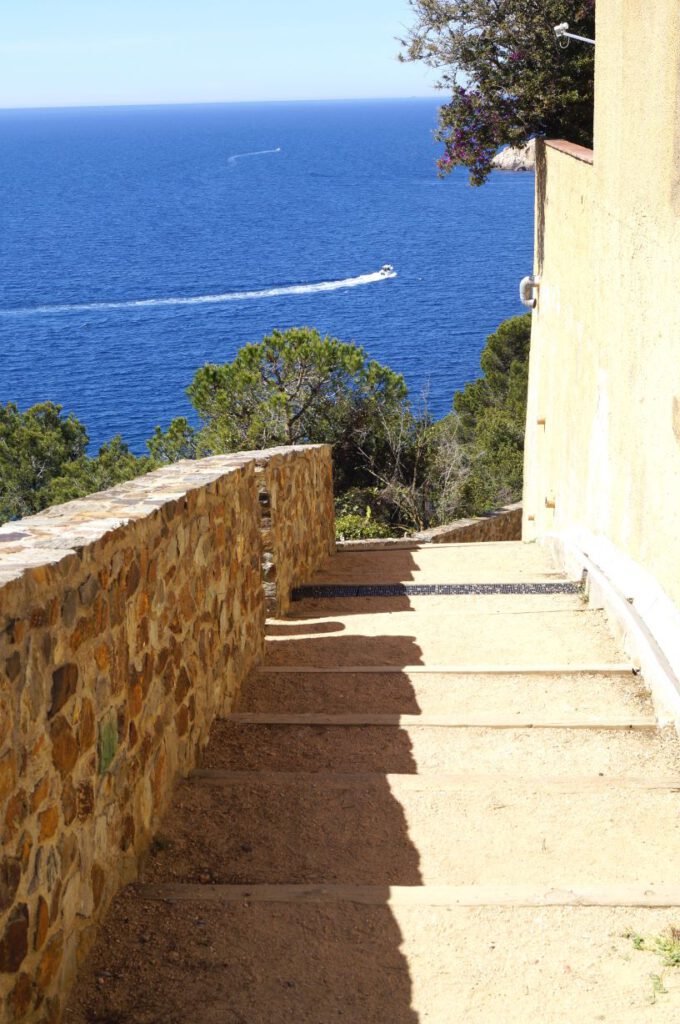
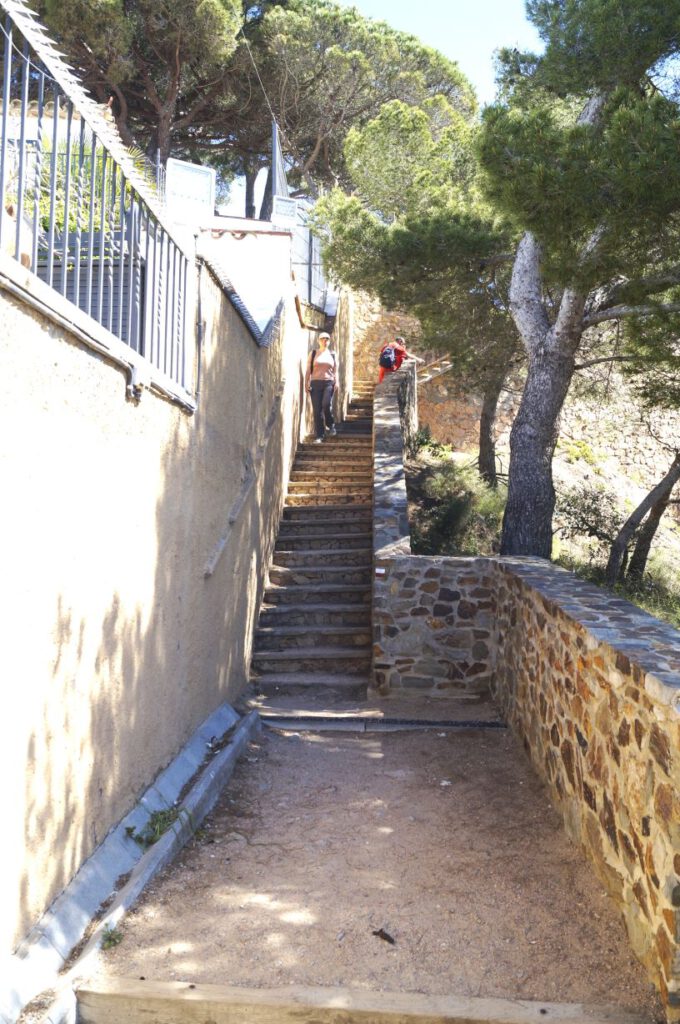
There were hiking trails right from the harbour along the rocky coast, which were quite strenuous for untrained people like us.
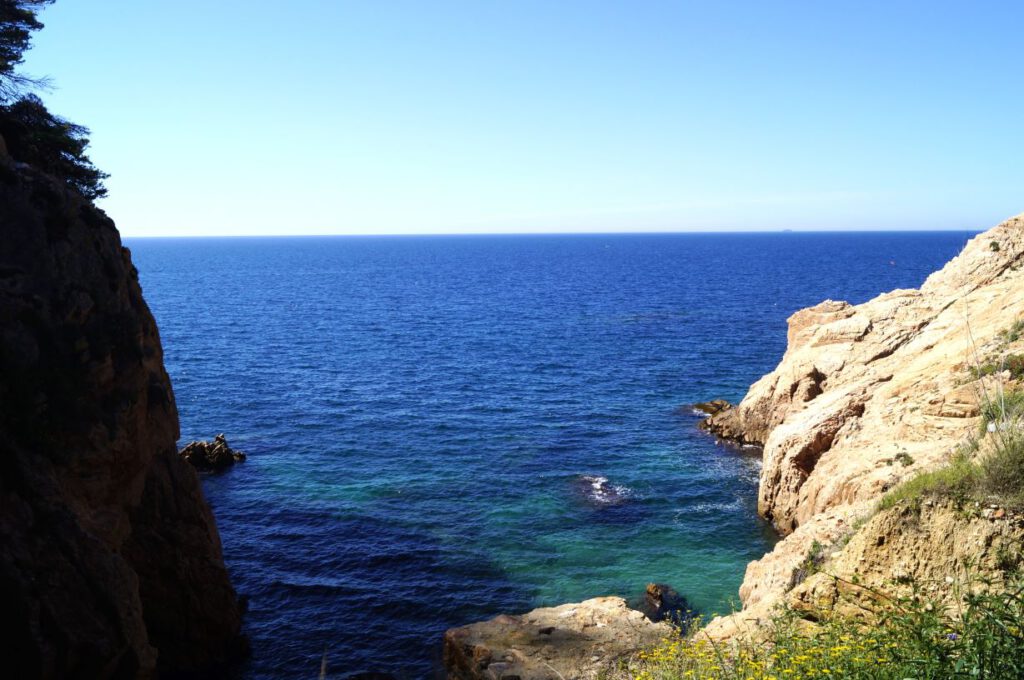
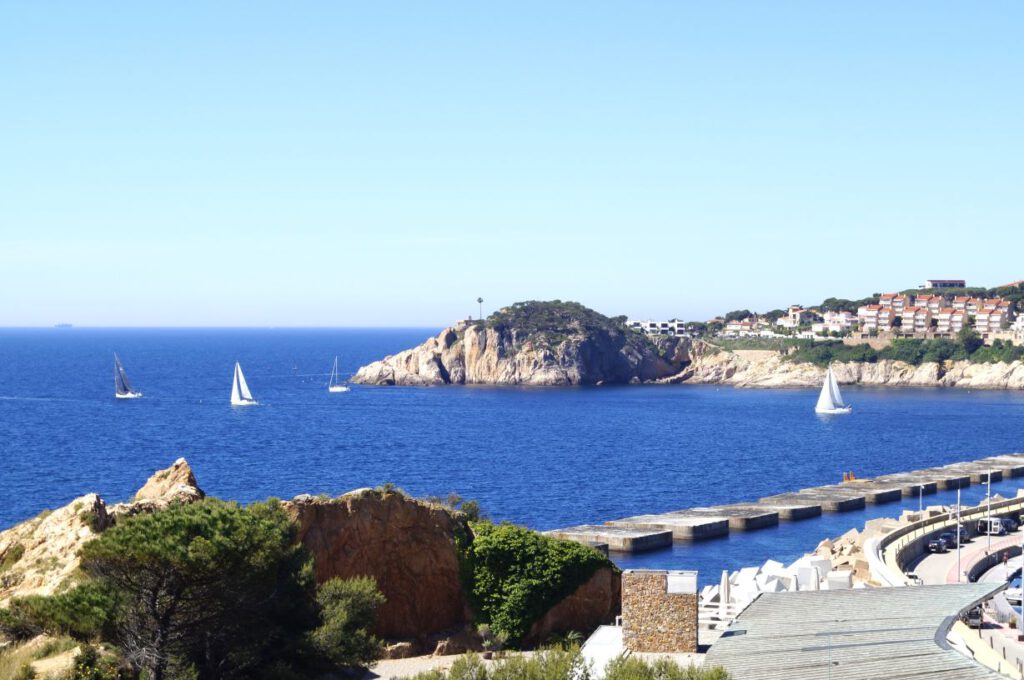
But there were beautiful views
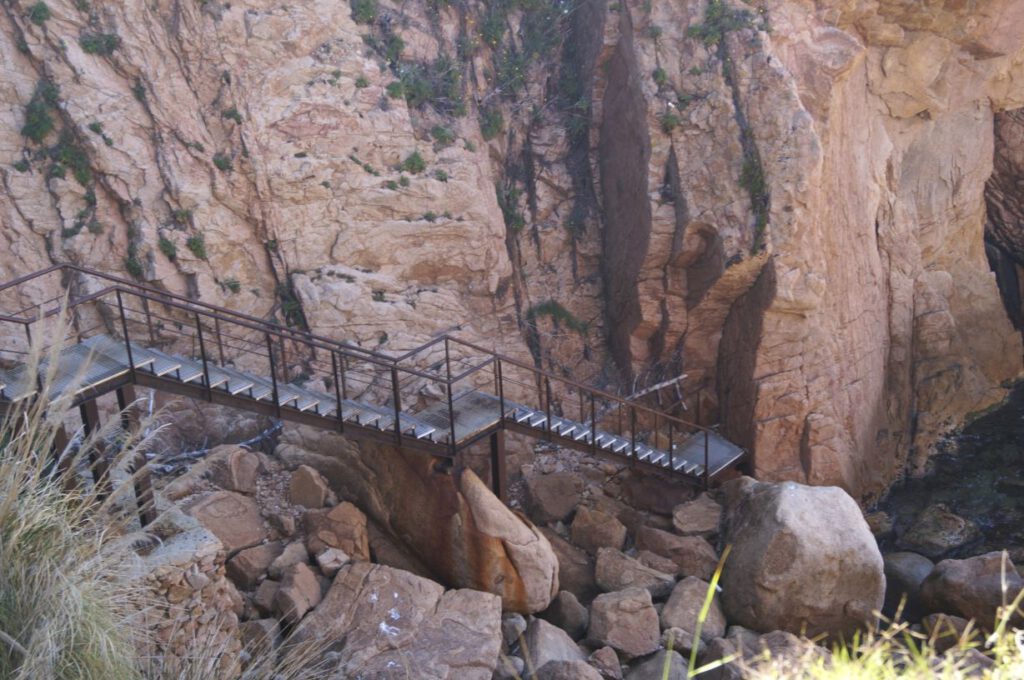
And a staircase that ends in the rocks.
Estratit, the next harbour, was our jumping-off point around the eastern tip of mainland Spain.
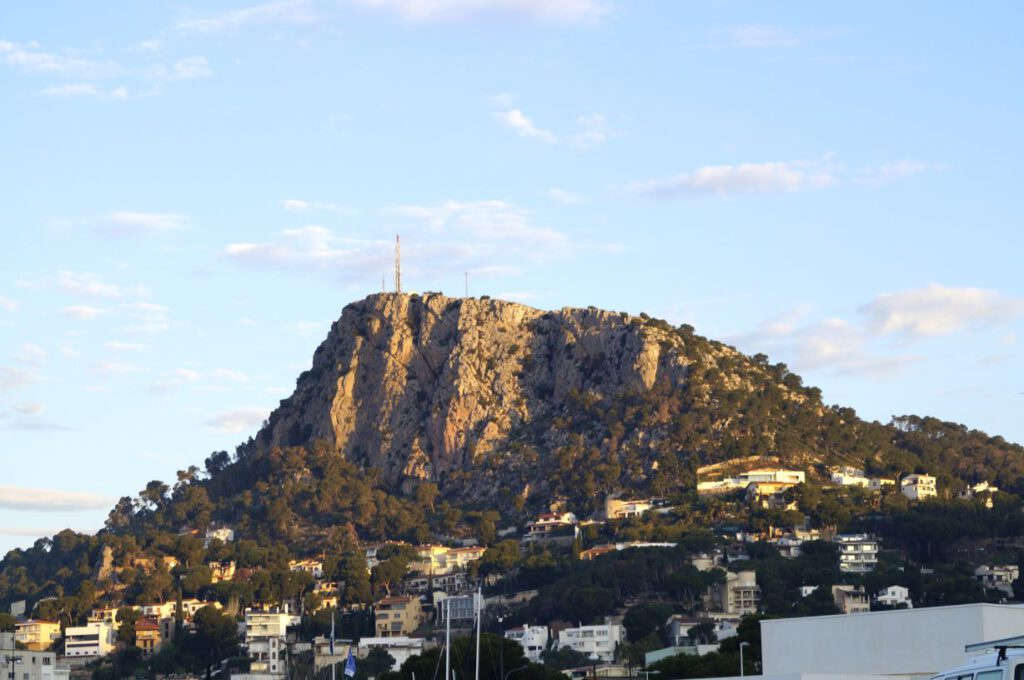
A morning greeting in Estartit
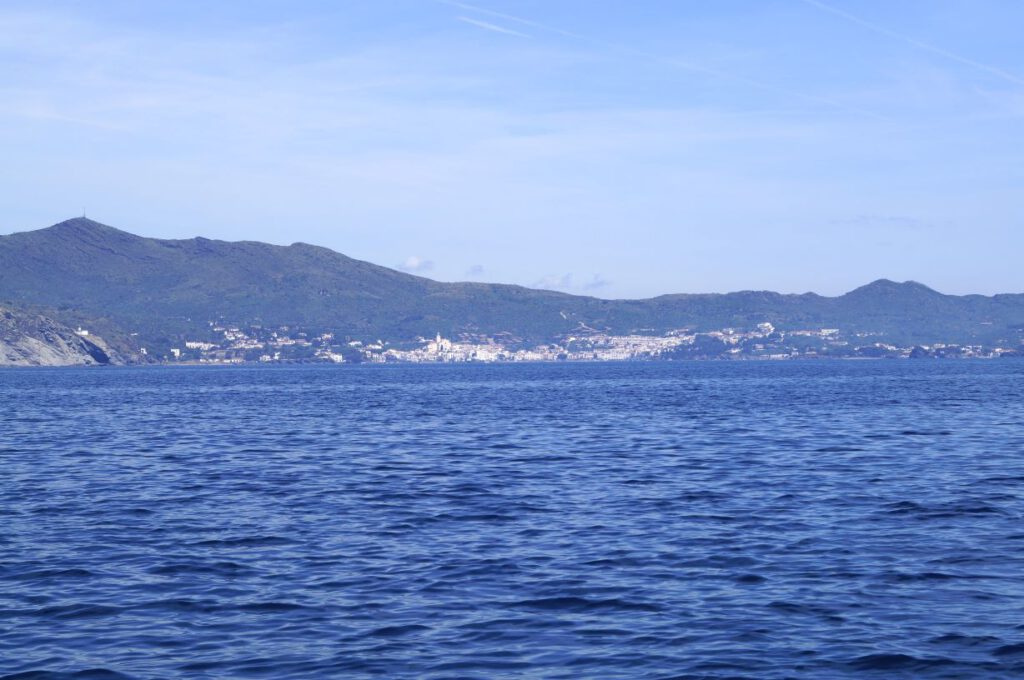
Cadaques, famous because of Dali
Then a beautiful forest coast
And another beautiful castle
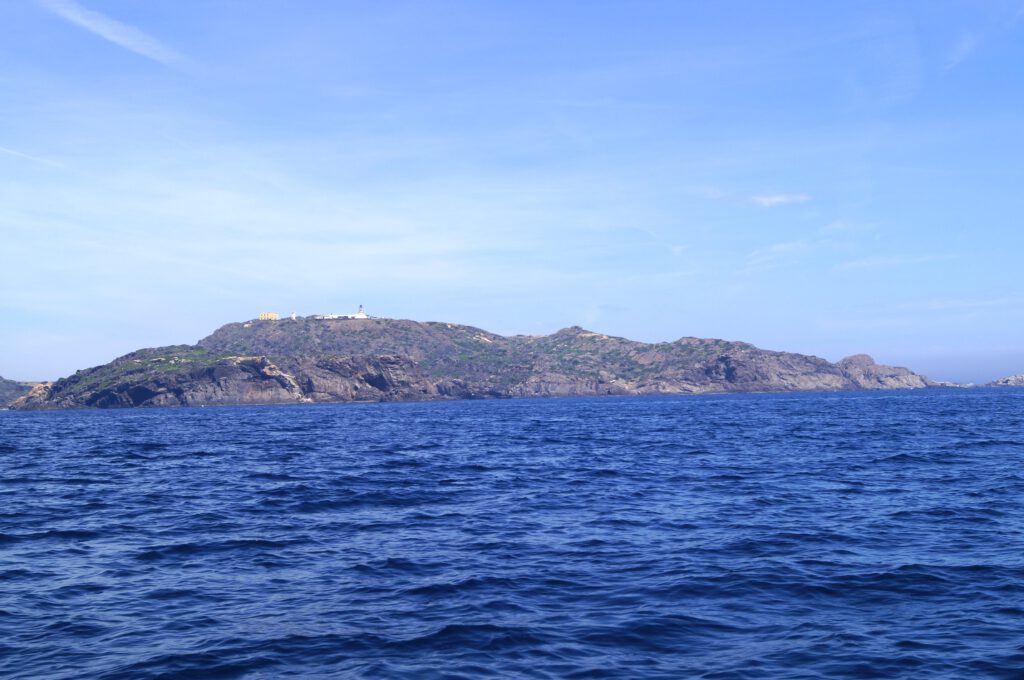
Cab de Creus, the eastern tip
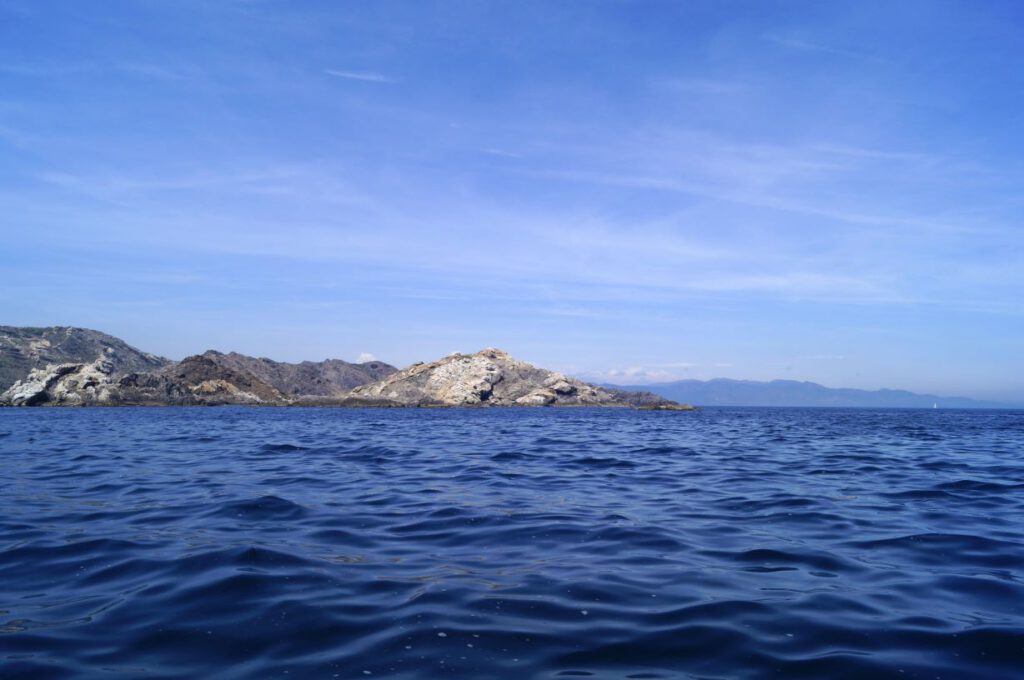
Bare rocks, you could drive between. We preferred to navigate round the outside.
Now we’re in Port de la Selva and enjoying the rainy day. This was just the beginning, but it’s already looking good. The rain sticks to the mountains here.
In keeping with our farewell to Spain, the next day invited us to roam around in sunshine and clouds, but with the wrong wind direction. We gathered many impressions in this beautiful place.
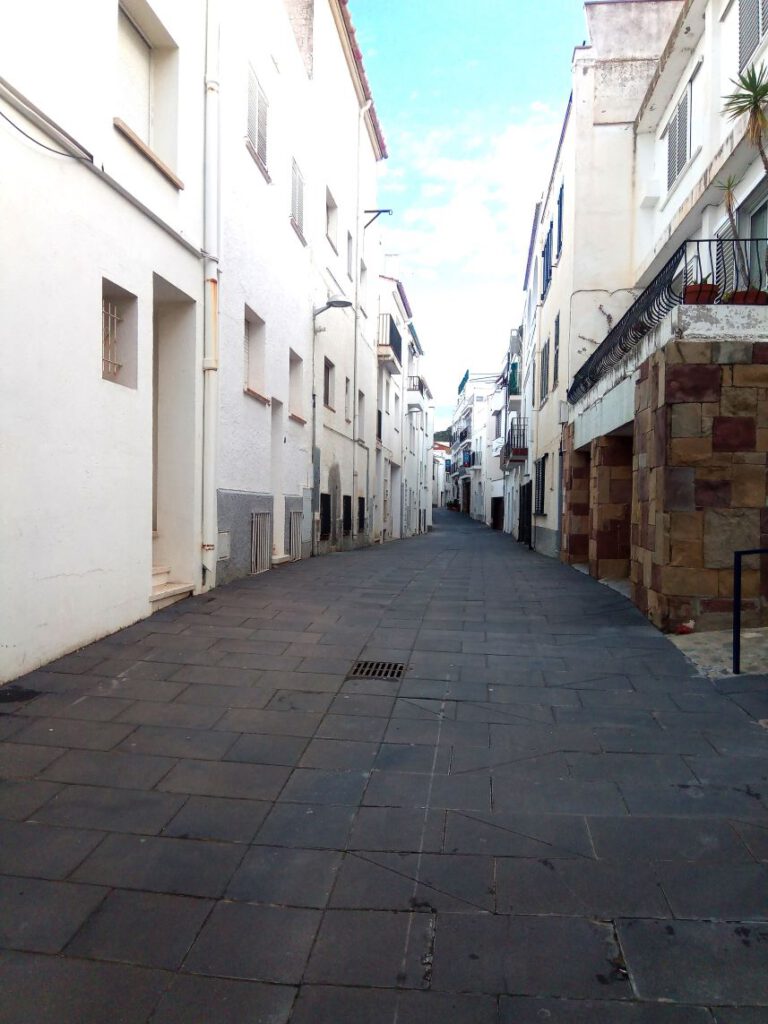
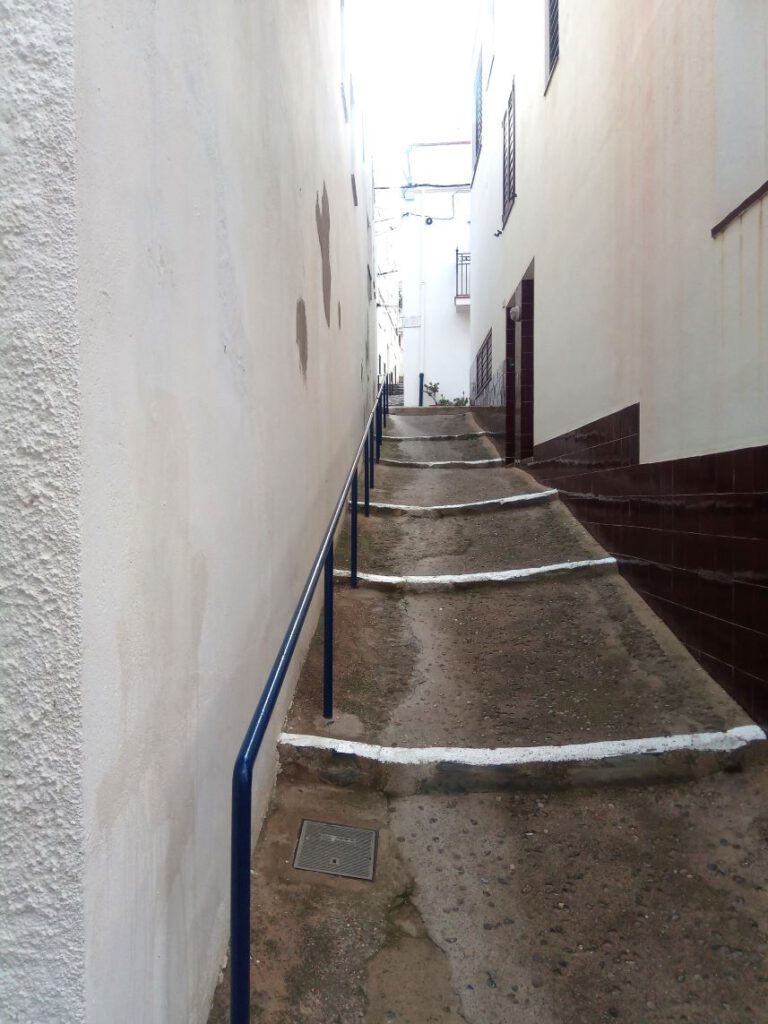
Beautiful little alleyways
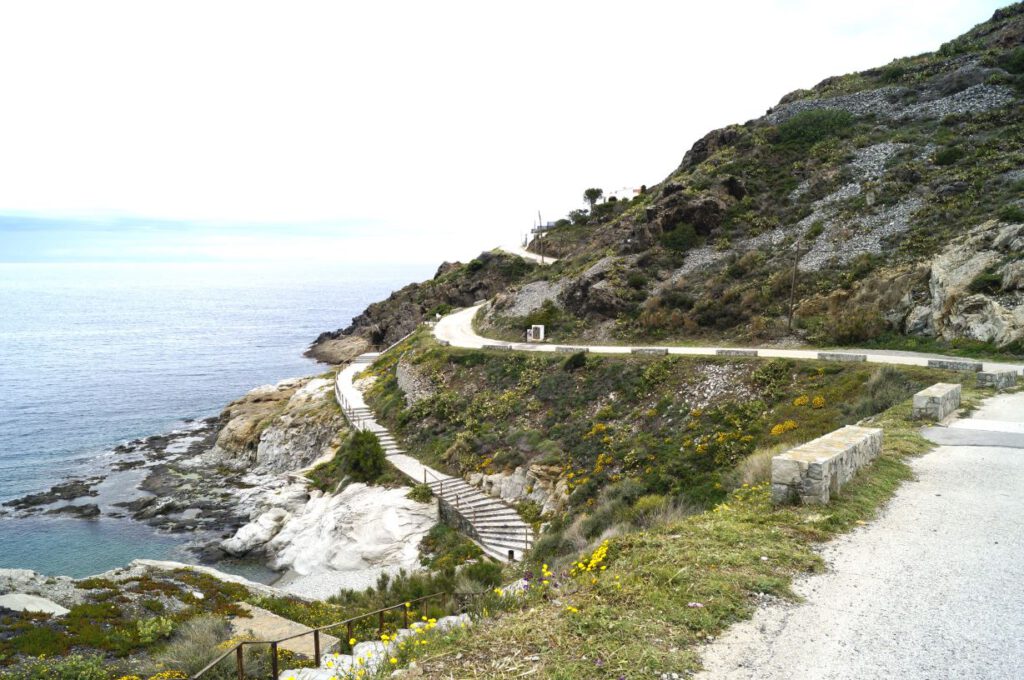
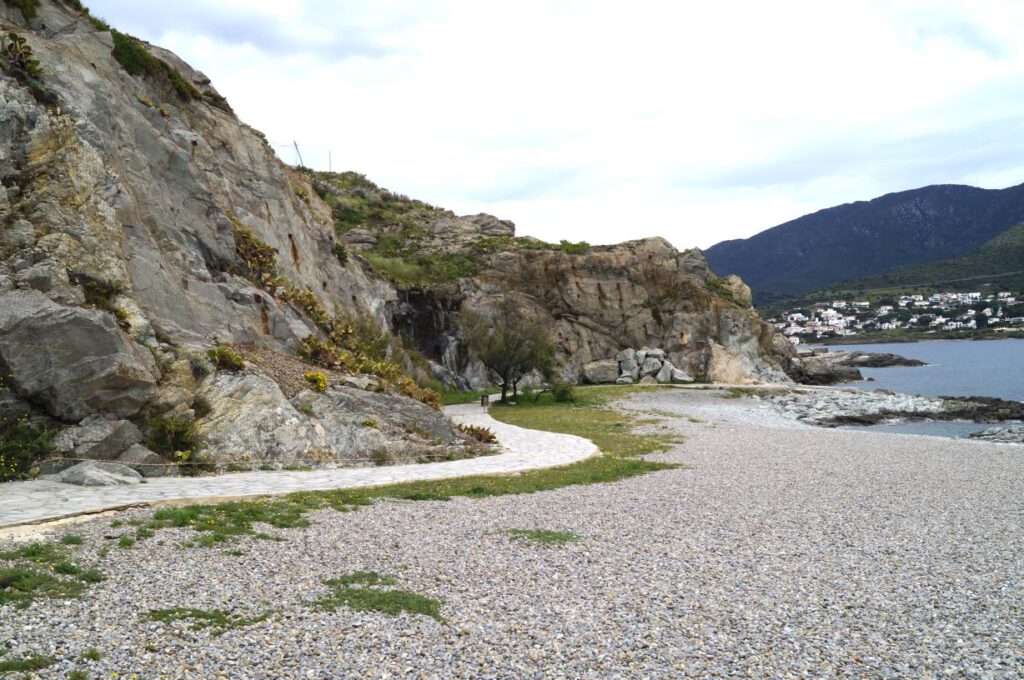
Walking and hiking trails along the coast
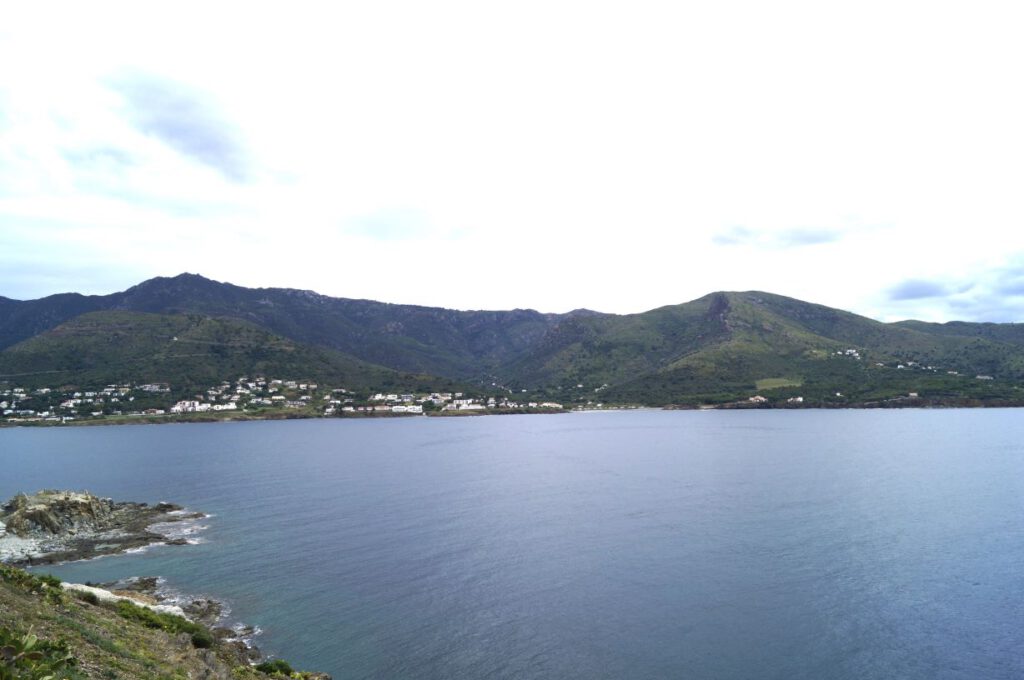
Steep green mountains
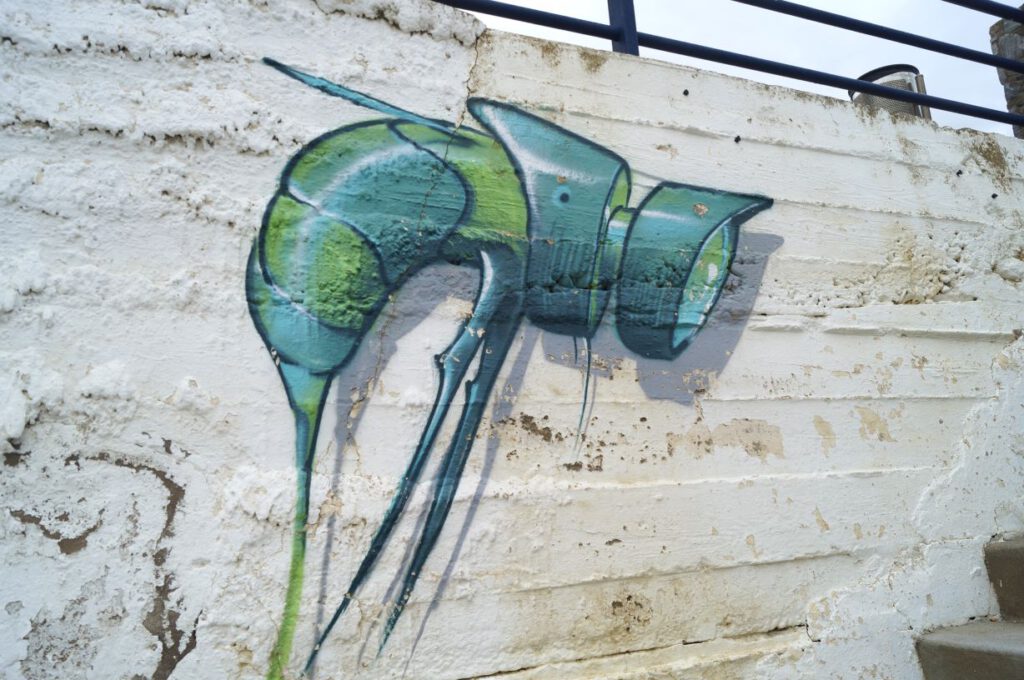
Graffiti art at the harbour
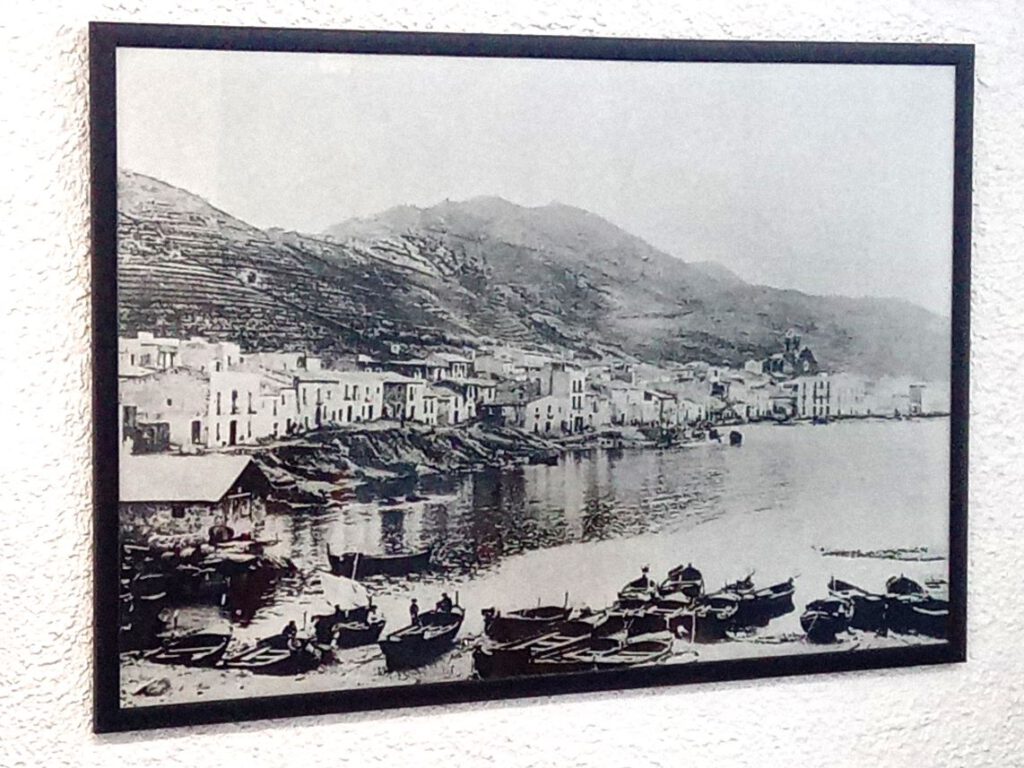
This is what it looked like around 80 years ago
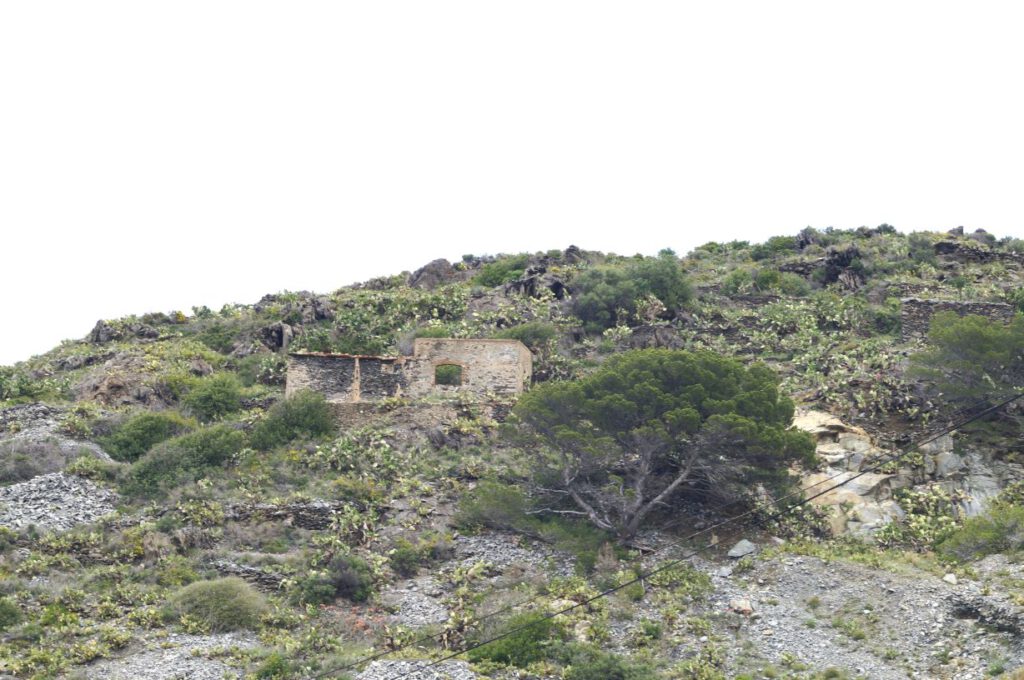
The hut probably already existed
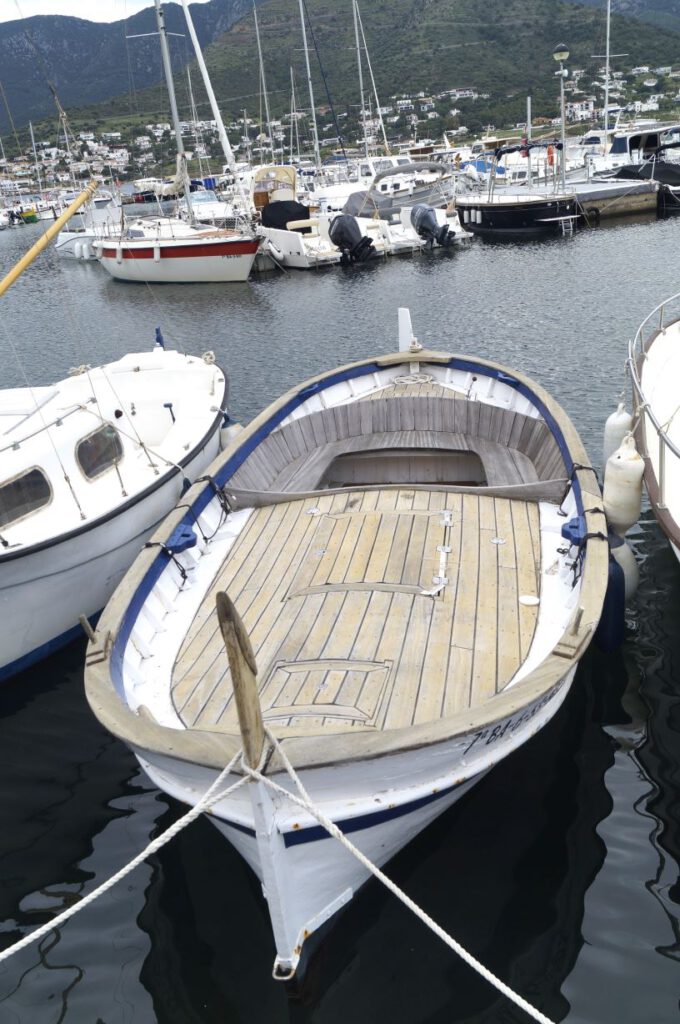
Only this fishing boat certainly is not so old, but it is still a classic car.
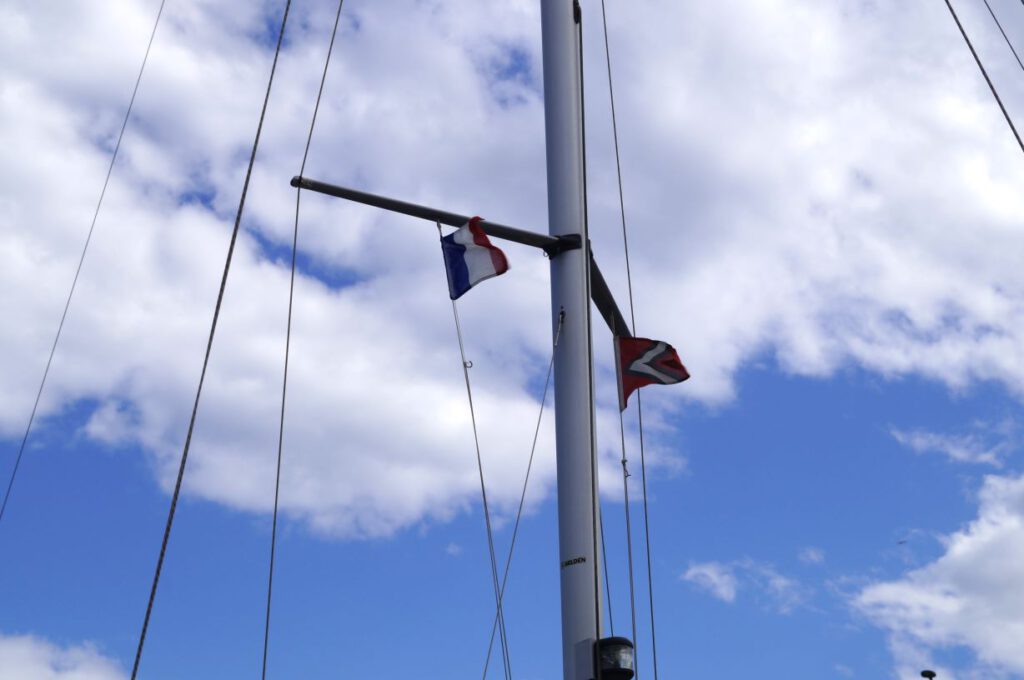
Before the flags get caught up, we say goodbye Spain and Catalonia.
Continue here: South of France
